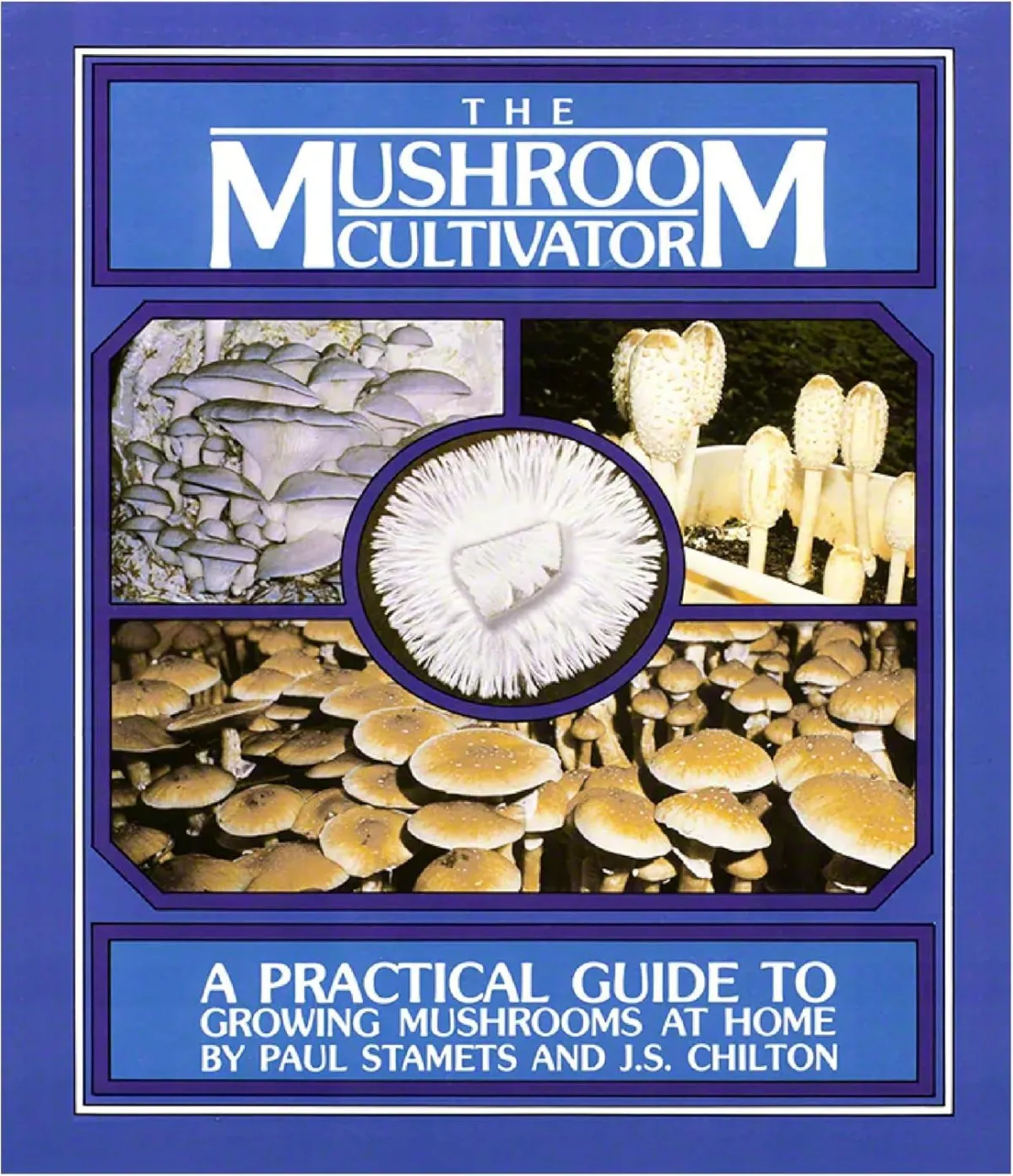Forward & Preface
High Detail Review Video of The Mushroom Cultivator by Paul Stamets and J.S. Chilton
Mycological and marketing expert Benjamin Ashpole delves into the book's forward and preface, introducing the world of mushroom cultivation and establishing the authors' expertise. Benjamin provides commentary, blending mycological expertise with marketing acumen to offer insights that bridge the gap between mushroom cultivation and the practicalities of the mushroom industry.
Play the video above

Forward & Preface
Find key topics:
Practical Guide: An accessible guide to mushroom cultivation at home, suitable for various scales of operation
Business and Marketing: Business advice for mushroom-related businesses plus marketing insights for farmed and foraged products
Techniques and Innovation: Discussion of time-tested techniques, contemporary innovations, and personal experiences in mycology
Unveiling the Wisdom of "The Mushroom Cultivator": Key Insights for Aspiring Mycologists
The Mushroom Cultivator" by Paul Stamets and J.S. Chilton is presented as a highly significant work within the mycology community. This book is recognized for its role in making cultivation techniques, once closely guarded secrets of a few historical mushroom farms, accessible to a wider audience. Its publication is seen as a pivotal moment, inspiring and supporting numerous amateur growers and emerging businesses in the field over the years.
Published at a time when professional cultivators often hesitated to share their techniques with amateurs due to competitive pressures, "The Mushroom Cultivator" broke new ground by providing a comprehensive and accessible guide to growing mushrooms at home. This book addressed a significant gap in information, meeting the burgeoning interest in mycology that has seen a remarkable increase over the past 50 years.
From small-scale personal projects to the fundamentals of larger-scale mushroom farming, the book delves into the necessary details for success. Readers will find guidance on everything from starting spore cultures to the final stages of harvesting fruit bodies. The authors also address crucial aspects like identifying and dealing with contaminants and pests, ensuring a well-rounded understanding of the entire cultivation process.
The book doesn't shy away from technical aspects, including scientific specifications tested by Paul Stamets, providing a robust foundation for understanding the underlying principles of mushroom growth. Furthermore, it offers valuable information on specific mushroom species, a topic of particular interest for those looking to cultivate beyond the common button mushroom.
Comprehensive Coverage of Mushroom Cultivation
One of the central aspects highlighted is the book's comprehensive nature. It reportedly covers a vast range of topics essential for mushroom cultivation, from basic home-growing setups to the complexities of larger-scale farming. This includes detailed scientific specifications, species-specific information, troubleshooting common problems, and even business considerations. The detailed approach aims to equip readers with the knowledge needed for successful cultivation at various scales.
Historical Context and the Shift Towards Open Knowledge
The historical context of mushroom cultivation is also discussed. It's noted that, in the Western world, mushroom cultivation was often treated as a mysterious art, with professional growers being protective of their methods due to concerns about competition. The difficulty of domesticating mushrooms is acknowledged as being more challenging than cultivating many plants, adding to this air of secrecy. "The Mushroom Cultivator" is credited with breaking down these barriers by openly sharing knowledge that was previously restricted.
The Recent Surge in Mushroom Interest
The significant increase in interest in mushrooms in recent times is also observed. This surge in popularity is attributed to factors such as the availability of good field guides, growing participation in mushroom conferences and forays, and the increased visibility of cultivated specialty mushrooms. The possibility of cultivating certain psychoactive species is also mentioned as a potential motivator for some individuals to learn about mushroom production, often leading to a broader interest in other edible and non-psychoactive fungi.
Practical Guidance for Growers
"The Mushroom Cultivator" is described as a milestone in the growing awareness of mushrooms and a leading source of information for home growers. The authors, Paul Stamets and Jeff Chilton, are presented as experts who have combined their knowledge of both the scientific and practical aspects of higher fungi. Stamets is recognized for his authority on psilocybin mushrooms, while Chilton has experience as a consultant to large-scale commercial growers. Their willingness to share their expertise is contrasted with the secrecy of some past professionals in the field.
The book's subtitle, "A Practical Guide to Growing Mushrooms at Home," accurately reflects its content, which is said to cover every aspect of the subject in a readable and sufficiently detailed manner. This includes guidance on obtaining equipment and supplies, step-by-step instructions for various procedures from spore culture to harvest, and methods for dealing with contaminants and pests. The goal is to demystify mushroom cultivation and make it accessible to everyone.
Historical and Cultural Significance of Mushrooms
Furthermore, the historical and cultural significance of mushrooms across various societies is touched upon. Their use as food, in medicine, and in religious rituals in cultures worldwide is noted. The evolution of mushroom cultivation from small-scale outdoor practices to large-scale commercial operations with controlled environments and scientific substrates is mentioned. The nutritional value of cultivated mushrooms, including their protein and vitamin content, as well as potential health benefits discovered through research, are also highlighted. It's important to remember that mushrooms are now classified as belonging to their own kingdom, separate from plants.
Ultimately, "The Mushroom Cultivator" is positioned as a work that aims to reopen the door to the fascinating world of mushroom culture by making previously unavailable information accessible in a clear and understandable way. It reflects the cumulative knowledge gained through the work of numerous mushroom growers and researchers.
@ Copyright 2025 All rights reserved.
Nourish Cap Promoters is a subsidiary nonprofit of Better Communication Forum 501(c)(3): 46-5701045
